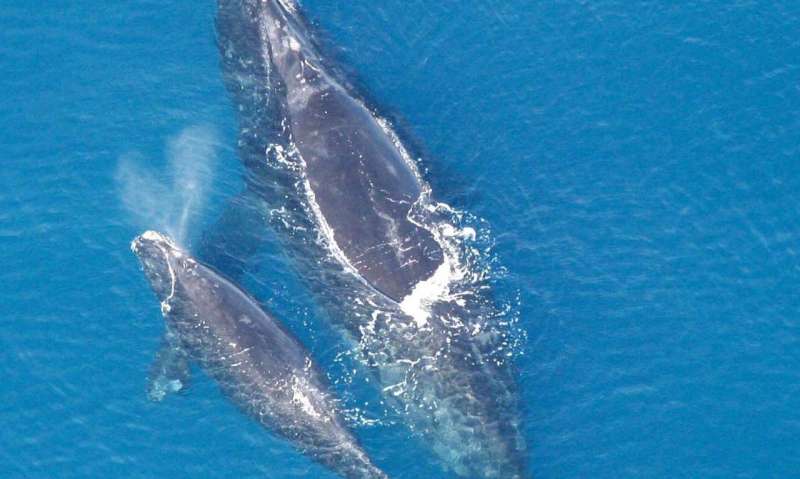February 28, 2024 report
This article has been reviewed according to Science X's editorial process and policies. Editors have highlighted the following attributes while ensuring the content's credibility:
fact-checked
peer-reviewed publication
trusted source
proofread
Female North Atlantic right whales growing smaller, leading to fewer births

A team of oceanologists affiliated from the U.S. and Scotland has found reductions in body size of female North Atlantic right whales is resulting in fewer births, endangering the species. In their study, published in Royal Society Open Science, the group analyzed historical data that included whale length information going back to the 1970s.
North Atlantic right whales are the most endangered of the right whale species. Ocean scientists believe that there are now just 356 of them in existence. And their numbers are dropping partially due to the decreasing size of mature females, which leads to fewer offspring, the researchers report.
To learn more about the health and viability of the North Atlantic right whale, the researchers obtained and analyzed data from the North Atlantic right whale consortium—an international organization founded in 1986 dedicated to the preservation of the North Atlantic right whale. Members of the consortium have been collecting data on the whales and compiling databases.
One particular data point is whale length, which has been collected from aerial photographs. The average length of adult females is decreasing, the researchers found. By using length as a means for calculating body volume, they found that the overall size of the whales has been dropping. As the females grow smaller, they have reduced probability of giving birth—the smaller the whale, the less likely she is to bear any offspring.
It is not known why the whales are growing smaller, but most theories suggest it has something to do with increasing difficulty in finding enough food, which could be tied to climate change.
Prior work has shown that lipid levels in whales are related to body mass and that the lipids are used as an energy source. As female right whales grow smaller, they store fewer lipids, reducing the amount of energy available for carrying offspring. The research team concludes their assessment by suggesting that the whales need even more protection to prevent them from going extinct.
More information: Enrico Pirotta et al, Decreasing body size is associated with reduced calving probability in critically endangered North Atlantic right whales, Royal Society Open Science (2024). DOI: 10.1098/rsos.240050
Journal information: Royal Society Open Science
© 2024 Science X Network

















